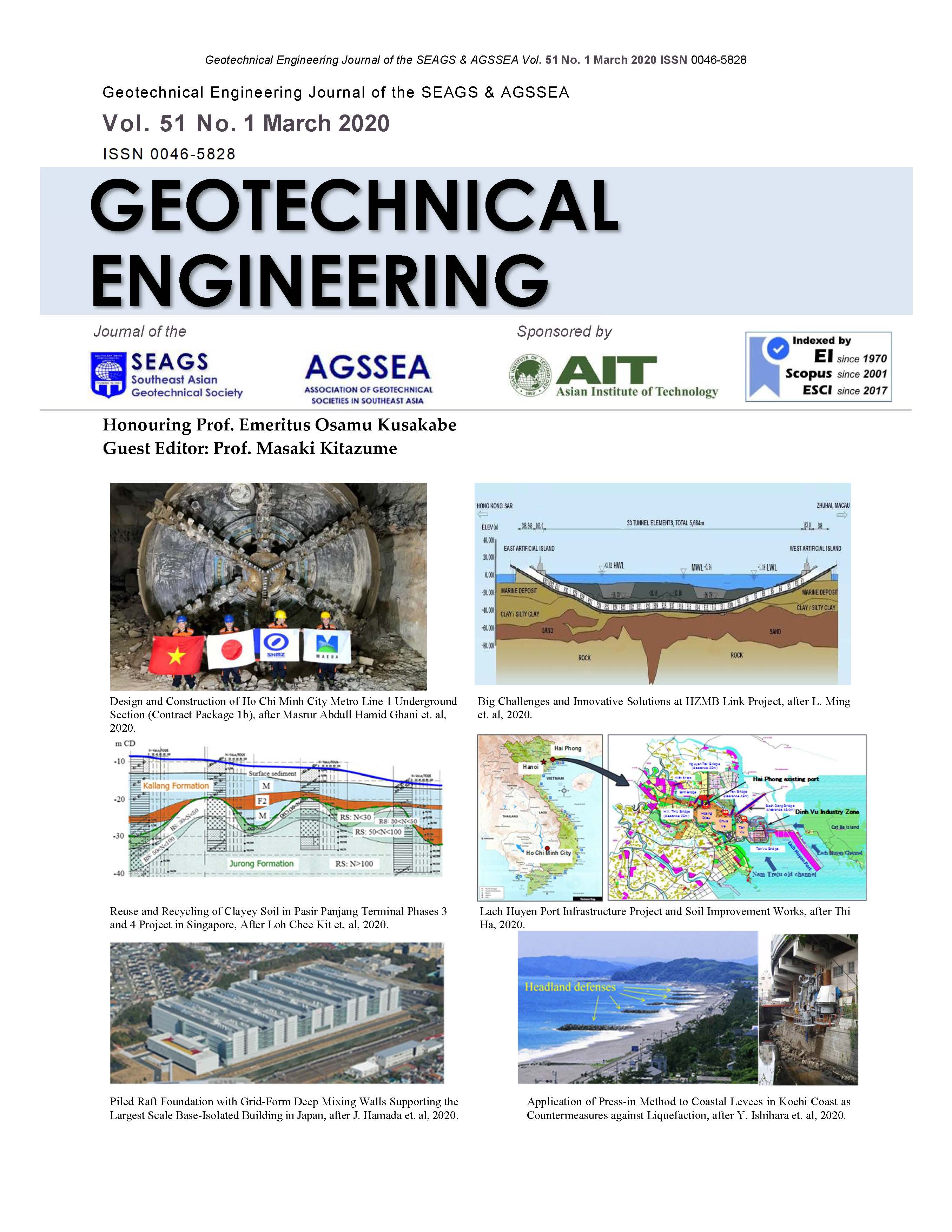Application of Press-in Method to Coastal Levees in Kochi Coast as Countermeasures against Liquefaction
Main Article Content
Abstract
There had been a concern that coastal levees in Kochi would lose their functions due to the settlement caused by liquefaction of the underlying ground as well as the wide-area ground subsidence of 2 meters in the coming huge Nankai Trough earthquake. Protected inlands were supposed to suffer from the long-term flood due to the succeeding tsunami. To cope with these problems, 13-kilometer-long levees in Kochi Coast have been appointed to be in direct control of Ministry of Land, Infrastructure, Transport and Tourism (MLIT), and have been under construction for seismic reinforcement. Requirements for this construction project were as follows: (1) levees have to be tenacious and their deformations have to be restricted below the allowable values, (2) construction should have minimal impacts on the surrounding environment and human activities, and (3) construction should be carried out at high speed and at low cost, even though cobbles and obstacles are contained in the ground. Under these requirements, reinforcement using sheet piles or tubular piles, along with the Press-in Method as their installation method, was chosen as a solution. This paper explains in detail the background and the decision making process of selecting the construction method for reinforcing the coastal levees in Kochi Coast, as well as the results of piling work in Nino and Nii sections.
Article Details

This work is licensed under a Creative Commons Attribution-NonCommercial-NoDerivatives 4.0 International License.
Copyright © 2019 Association of Geotechnical Societies in Southeast Asia (AGSSEA) - Southeast Asian Geotechnical Society (SEAGS).


